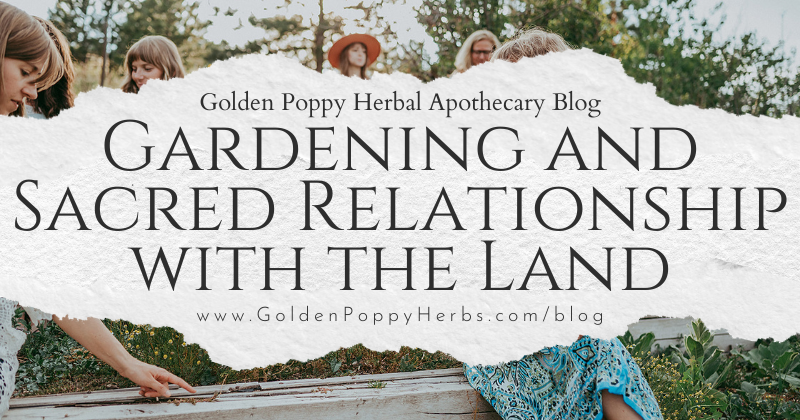
March is the month in which we celebrate the Spring Equinox, a day in which we yet again experience equal day and equal night. However, in this instance, as opposed to the Autumn Equinox, we feel a building of energy as we dance our way into longer periods of light. From this period forward, the days last longer and the nights are shorter, and the winter slowly loosens its icy grip, allowing the natural world to slowly thaw, wake up, and embrace the warmth of spring.
For many of us who identify with the spirit of having a “green thumb,” the Spring Equinox feels like a significant marker of time. It holds a similar electric feeling like that of standing at the starting line of a big race you have been anticipating, waiting for the cap gun to go off. It’s a time in which our gardens start calling to us again, where we pull down our seeds from a cabinet they have been lovingly tucked away in for the winter, and where we are dying to get our fingers into the soil!
The practice of gardening is a widely-enjoyed hobby or pastime, however it is also proven to be immensely beneficial for our health. Studies have proven that engaging in gardening has benefits including positive improvements for mental health and stress reduction, increased stamina and strength, reduction of blood pressure, and even can help reduce the risk of dementia.
Closely interacting with and tending to the natural world is beneficial to us because we, as humans, are part of, and not separate from nature. While we may hold so much grief for the current conditions of our degraded natural world, largely at the hands of humans, we can find hope in the fact that this is a symptom of humans simply having lost our connection to the land. Robin Wall Kimmerer, in her beautiful book Braiding Sweetgrass, reminds us that, “the land knows you, even when you are lost.” This means that the hope we feel lies in knowing that we are all connected to deep remembering, and all descend from cultures that had loving and intimate relationships with the land, and who knew what it meant to be indigenous to the place. Therefore, this collective remembering is within each and every one of us, and we are all innately capable of coming back into a relationship with the land and in communion with the natural beings we are in connection with.
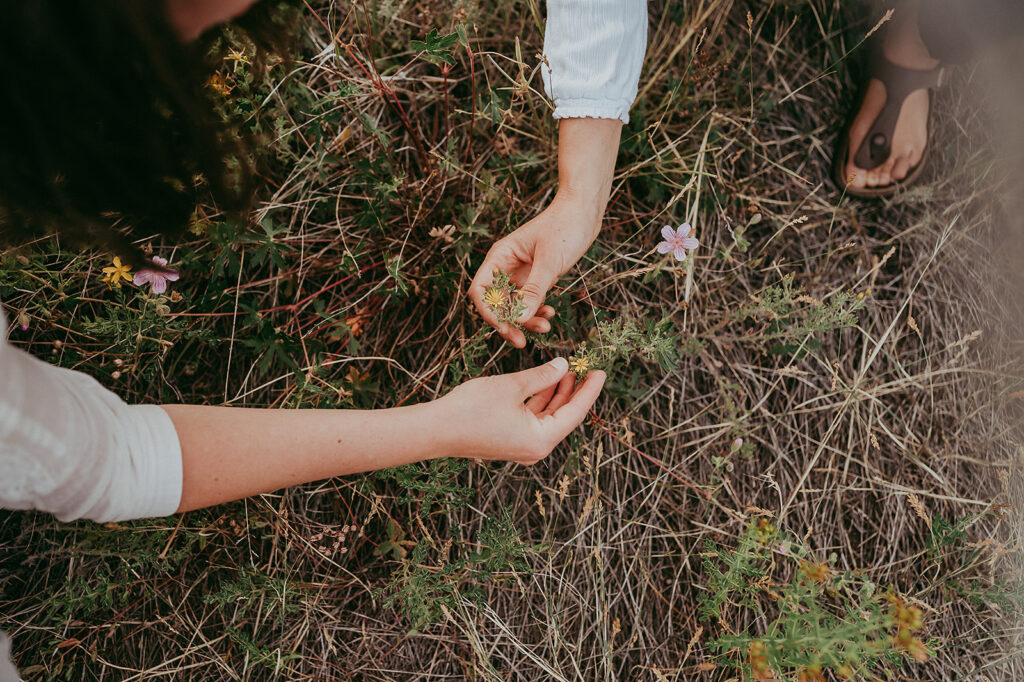
Being in a relationship with the land means that we are engaged in the act of reciprocity; we do not solely take, but generously give. The natural world is sustained by all beings practicing reciprocity, and it is when this cycle is disrupted that our natural world falls out of balance. The act of gardening is at its core a beautiful practice of reciprocity – we provide present and loving care as we tend the garden, and in return can harvest food and nourishment from the garden. It is for this reason that gardening is much more than a beloved pastime, but is a practice that is deeply sacred. It is a gateway to our remembering, and a starting point to help us heal our relationship with the land.
We invite you to deepen into this space with us as we explore how we can weave in the sacred into our gardening practice, which not only helps us to heal, but our community and the earth itself to heal.
“Action on behalf of life transforms. Because the relationship between self and the world is reciprocal, it is not a question of first getting enlightened or saved and then acting. As we work to heal the earth, the earth heals us.” – Robin Wall Kimmerer, Braiding Sweetgrass
Before We Build the Garden
In our fast-paced, modern lifestyle, it is not a common practice to take the time to come into presence with the land. For example, when we move into a new home, we often look at our yard as something to landscape, drawing up plans for it based on an aesthetic vision we are trying to achieve. And while there is of course nothing wrong with wanting a space that we create that is beautiful to us, what might it be like if we were to simply take a pause? What if we chose to let ourselves observe the space during each of the seasons, to see what changes? What if we spent each day exploring where there is the most sunlight and the most shade? What little critters and insects already call this place home? What plants are native to this land, and what tending do they ask of us?
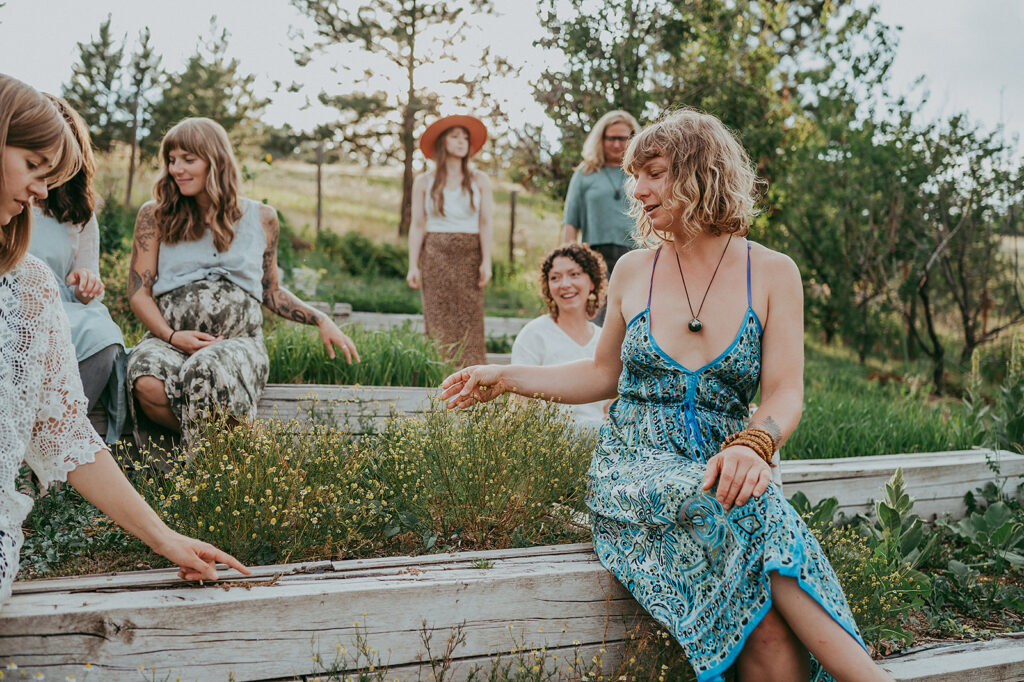
In her book, Root and Ritual, author and community tender Becca Piastrelli describes a practice of taking a year to build a relationship with the land, learning from the land as a student, and setting the intention to “consciously shift your perspective from one of ownership to stewardship.” Piastrelli further explains that the concept of ownership is associated with a sense of dominance, and a lack of acknowledging those who depend on the resources the land provides, whereas stewardship, “is to caretake by keeping the web of life that is sustained by the land in tact as best you can – there is no intention of dominance, but rather interdependence.”
How might your garden thrive if you were to approach your space from a mindset and perspective of stewardship versus ownership? How might you work in reciprocity with the space available to you, inviting in the wildness of nature in as many ways as possible?
Furthermore, in moving through this practice of conscious stewardship, it is important to acknowledge that we were not the first to engage in mindful relationship with the land. How might you honor those who came before you, particularly the communities of people indigenous to the land who were the original tenders and stewards of the land you now occupy? Part of our building relationship and healing to the land is in educating ourselves, learning the names of the communities of ancient peoples who were the first stewards, and expressing deep gratitude for the love and wisdom they have infused into the land.
It is also important to remember that we do not need a lot of space or to own a home with a backyard to cultivate a garden. We can work with what we have and apply the same principles, whether we have a full garden, a community garden plot, or even a few well-loved herbs in small pots on a window sill or apartment balcony. It is our intention to consciously connect with the land we live upon and to work closely and mindfully with the plants we are nurturing that matters.
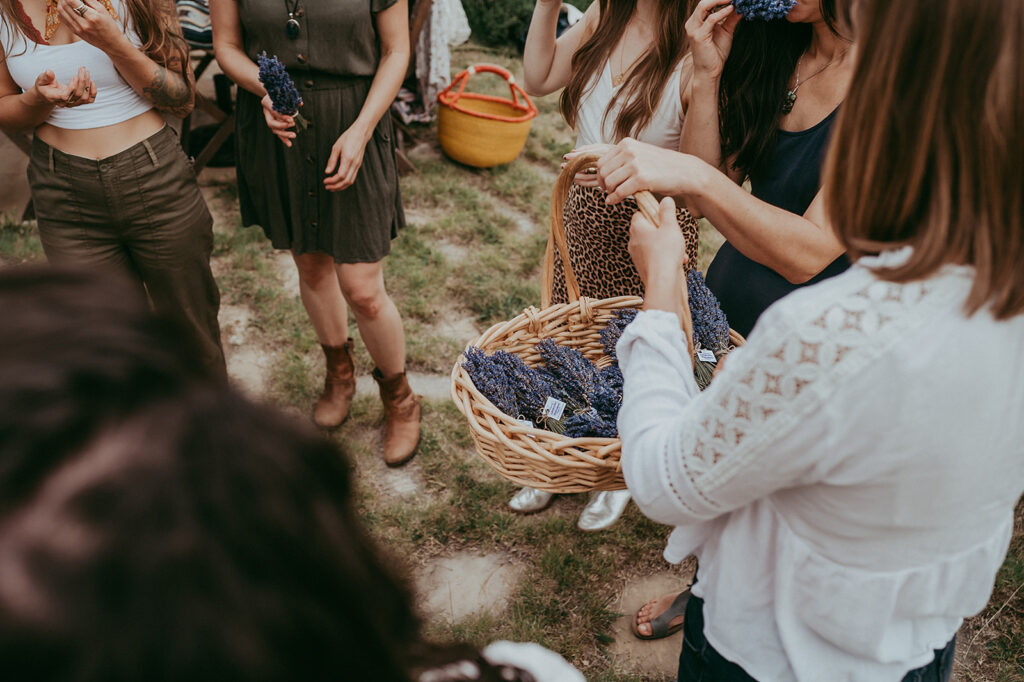
On Being the Student
We can continue to weave in the sacred into gardening through making the intention to interact with the garden as a teacher, and we be the student. In addition to learning about plants themselves, and studies such as horticulture and botany, gardens have much to teach us from a spiritual and philosophical perspective.
In her book reflecting on lessons from the natural world titled, Mirrors in the Earth, author, herbalist, and earth-intuitive Asia Suler writes, “gardens are not for the sensitive soul, and in some ways they are right. On its surface, gardening looks like all daffodils and days in the sunshine, but behind every flourishing flowerbed is hard labor and even harder decisions.”
As we step into the space of growing into stewards of the land, this may illuminate uncomfortable feelings within us. We may not feel as though we have a right to choose which plants must be weeded, or intervene in the garden space in anyway, for this can feel like we are imposing ourselves upon nature. However, Asia goes on to teach us that gardens, at their most fundamental core, teach us about boundaries. She reminds us that many of us grow up in cultures and societies that do not provide us with examples of how to learn to have boundaries, though it is important to recognize that healthy boundaries are what allow nature to thrive. It is when boundaries are disrespected or ignored, that we fall into cycles of domination and scarcity.
“This is really why I made my daughters learn to garden – so they would always have a mother to love them, long after I am gone.” – Robin Wall Kimmerer, Braiding Sweetgrass
Gardens also have much to teach us about deep presence. When we are in the garden, we have to pay close attention. Perhaps we need to take the time to find that pesky, but tiny larvae that are decimating the leaves on our cabbage. Sometimes we may need to be more conscious of the water we are using from one day to the next, as the temperatures and weather fluctuate throughout the growing season. Perhaps some plants are more fragile than others, requiring us to be gentle and move slowly and carefully than with others. Perhaps some crops have an affinity for a particular moon phase, while some yearn for the height of the midday sun. Gardens remind us to take pause, to be observant, and that there is always something new we can learn each day.
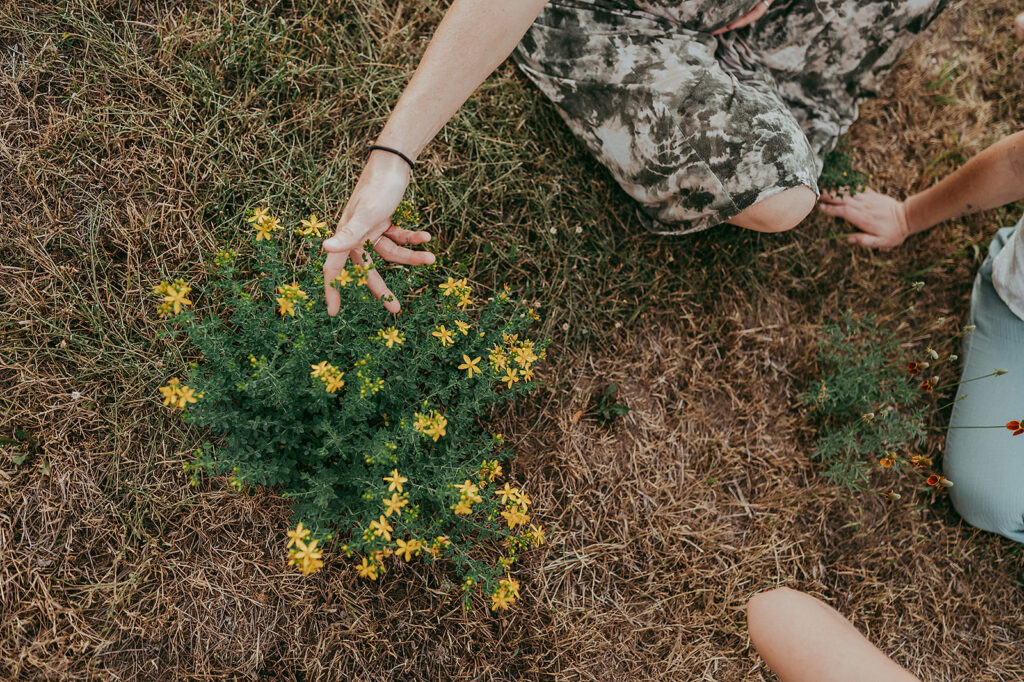
And more so, the garden is a metaphor for community. It is a space where diversity thrives, and with loving tending, all harmonize together. How might we reflect this in our own communities, and how might we share the lessons we learn from the gardens with one another?
As we move through this month, and as we begin to plant the seeds of the gardens of this new year, how might we hold space for sacredness in our gardens? How might we honor and express gratitude for the deep wisdom that we will soon be witness to? How might we continue to dance among the beautiful plant teachers?
We wish you all happy tending, and may you all have the most abundant spring, dear readers!
Sources:
- Hayes, Kim. “5 Secret Health Benefits of Gardening.” AARP. 14 June 2017. Retrieved from: https://www.aarp.org/health/healthy-living/info-2017/health-benefits-of-gardening-fd.html
- Kimmerer, Robin Wall. Braiding Sweetgrass. 15 October 2013. Milkweed Editions.
- Piastrelli, Becca. Root and Ritual: Timeless Ways to Connect to Land, Lineage, Community, and the Self. 14 December 2021. Sounds True.Suler, Asia. Mirrors in the Earth. 28 June 2022. North Atlantic Books.
Browse by category
- Aromatherapy
- Astrology & Magic
- Ayurdeva
- Botany Foraging & Gardening
- Chakras
- Digestion
- Earth Connection
- Energetics
- Flower & Gem Essences
- Folk Traditions
- Herbalism & Holistic Health
- Immune Support
- Materia Medica
- Mushrooms
- Nutrition
- Seasonal Living: Autumn
- Seasonal Living: Moon
- Seasonal Living: Spring
- Seasonal Living: Summer
- Seasonal Living: Winter
- Skin & Body Care
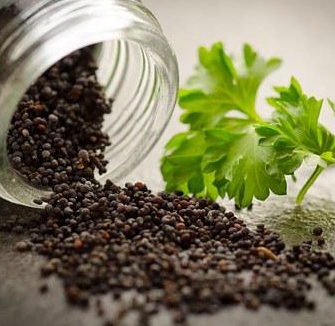
Don’t Miss a Thing!
Enter your email below to be the first to know about sales, new products and tips for taking care of your pieces.

